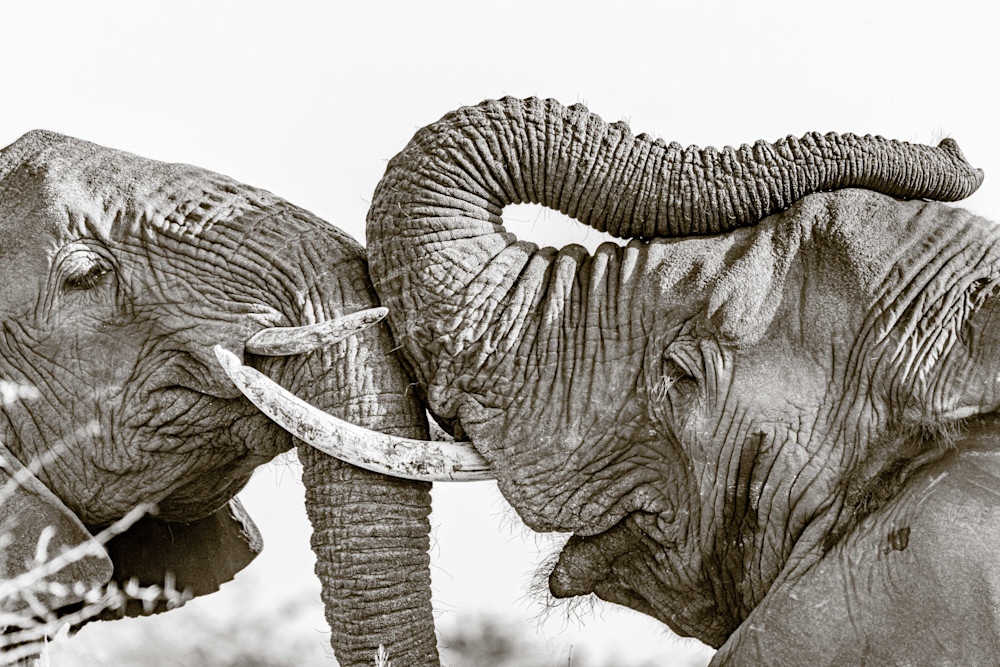Elephant tusks are elongated, curved upper incisor teeth that grow continuously throughout an elephant's life. These tusks are a defining characteristic of both male and female elephants, and they play various roles in their lives. Here's an overview of elephant tusks:
1. **Material and Composition:**
Elephant tusks are composed of dentin, a dense and hard tissue, covered by a layer of enamel at the tip. They are remarkably strong and can withstand significant pressure.
2. **Continuous Growth:**
Unlike human teeth, elephant tusks continue to grow throughout an elephant's life. The rate of growth varies among individuals and species but is generally about 7 inches (18 cm) per year.
3. **Size and Shape:**
The size and shape of elephant tusks vary between species and individuals. African elephants, both savanna and forest elephants, typically have larger tusks than Asian elephants. Tusks can reach impressive lengths, with some individuals having tusks over 10 feet (3 meters) long.
4. **Sexual Dimorphism:**
While tusks are present in both male and female elephants, they are generally larger in males. The tusks of female elephants are shorter and thinner. In some cases, female elephants may not have visible tusks at all.
5. **Tool for Feeding:**
Elephants use their tusks as versatile tools for various activities. They are employed in digging for water, roots, and minerals. Tusks are particularly useful for stripping bark from trees, revealing nutrient-rich layers beneath.
6. **Defense Mechanism:**
Tusks serve as a natural defense mechanism. Elephants can use their tusks to ward off predators or rival males. The mere presence of tusks can deter potential threats, and elephants may use them in displays of dominance or aggression.
7. **Communication:**
Elephants use their tusks in communication, particularly during social interactions. Tusk displays, such as raising or crossing tusks, can convey different messages within the herd, signaling submission, dominance, or emotional states.
8. **Symbol of Age and Health:**
The size and condition of an elephant's tusks can be indicative of its age and overall health. Healthy elephants with access to good nutrition may have longer and more symmetrical tusks.
9. **Ivory Trade Threat:**
Unfortunately, the beauty and desirability of elephant tusks have made them a target for illegal poaching and the ivory trade. This poses a significant threat to elephant populations, as it has led to a decline in numbers and disrupted social structures within herds.
10. **Conservation Efforts:**
Efforts to curb illegal ivory trade and protect elephant populations have been underway globally. Conservation organizations, governmental initiatives, and international agreements aim to safeguard elephants and their tusks from the threats posed by poaching.
The plight of elephants and the demand for their tusks highlight the importance of conservation efforts to ensure the survival of these majestic creatures and preserve the integrity of their natural habitats.
















